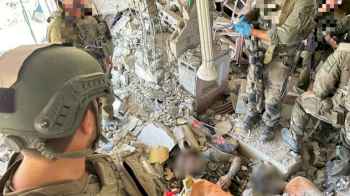TACTICAL TRAINING.
What type of exercises theorize to do in a more tactical concept
In the context of applying hypelifting to more tactical training, several types of exercises can align with the mental and physical demands of tactical environments. Here’s a breakdown of exercises and their potential adaptations:
1. Heavy Compound Lifts (Deadlifts, Squats, Bench Press)
- Purpose: These lifts build full-body strength, which is crucial for carrying heavy loads, dragging injured comrades, or quickly moving heavy objects during tactical operations.
- Tactical Application: Compound lifts mirror the need for explosive power and endurance in real-life scenarios, such as breaching, sprinting, and heavy lifting. The hypelifting approach of attempting near-maximal weights builds mental resilience—helping individuals stay calm under stress.
2. Sprints and Loaded Carries
- Purpose: Sprints, especially under load (e.g., carrying kettlebells or weighted vests), simulate the quick bursts of energy needed in tactical situations, such as evasion or pursuit.
- Tactical Application: Speed under load is essential for quick evacuations or getting to cover. The hypelifting mindset of pushing past limits can be applied to increasing both speed and stamina under weight.
3. Bodyweight Exercises Under Stress (Push-ups, Pull-ups, Dips)
- Purpose: Training with bodyweight exercises increases endurance and muscular endurance, crucial for climbing, pulling, or pushing oneself over obstacles.
- Tactical Application: These exercises, combined with a hypelifting mindset, encourage breaking past mental limits when fatigued. Tactical operators may have to perform high volumes of these exercises when under duress, so building mental fortitude while training them is key.
4. Functional Movements with Odd Objects (Sandbags, Logs, Rucks)
- Purpose: These objects mimic the irregular shapes and weights of gear, equipment, or injured personnel.
- Tactical Application: Training with awkward loads helps build the adaptability and strength necessary in unpredictable tactical environments. The intensity and raw emotion associated with hypelifting can mirror the mental stress experienced during real-world challenges.
5. Interval-Based Training (High-Intensity Interval Training – HIIT)
- Purpose: HIIT develops cardiovascular endurance and the ability to recover quickly from intense bursts of effort, essential for sustaining energy during missions.
- Tactical Application: Tactical operators need to switch quickly between high-effort and low-effort phases. The hypelifting mentality of pushing through mental barriers can be applied to each interval, mimicking the need to maintain focus during tactical situations.
6. Tactical Drills (Crawling, Obstacle Courses, Breaching Simulations)
- Purpose: These drills mimic real-world tactical movements and problem-solving under physical and mental strain.
- Tactical Application: Combining these drills with the hypelifting mindset—where the focus is on attempting the task, no matter the outcome—can help operators develop the psychological resilience needed for high-stress operations.
7. Mental Focus Drills
- Purpose: Exercises such as holding challenging static positions (planks, wall sits) or meditation while under physical stress train focus and calmness.
- Tactical Application: Tactical missions require not only physical readiness but extreme mental focus under stress. By combining these with hypelifting’s emotional intensity, the focus is placed on staying mentally resilient when it counts.
8. Combat and Self-Defense Training
- Purpose: Simulated hand-to-hand combat or self-defense drills are critical for any tactical situation where close-quarters combat is involved.
- Tactical Application: The raw energy generated in hypelifting can carry over to combat training, pushing individuals to engage with more intensity and resilience in physically and mentally demanding situations.
Incorporating the hypelifting mentality of embracing failure and pushing past perceived limits into these exercises could significantly enhance tactical readiness. The aim is not only physical success but building the mental toughness needed to operate under extreme pressure oai_citation:2,Search ERIC KIM hypelifting – ERIC KIM oai_citation:1,ERIC KIM HYPELIFTING – ERIC KIM.
HYPELIFTING by Eric Kim, in context of tactical training ?
Eric Kim’s concept of HYPELIFTING is an innovative approach to weightlifting, primarily focusing on the mental and emotional aspects of lifting heavy weights, rather than just the physical outcome. In the context of tactical training, hypelifting could be seen as a way to build not only physical strength but also mental resilience and the ability to push through perceived limitations. This mindset can be essential in tactical environments where overcoming physical and mental barriers is critical.
Hypelifting involves psyching oneself up before attempting a weight that feels beyond your current capacity, often through loud vocalizations, self-slapping, or other adrenaline-boosting actions. The idea is to get into an intensely focused, high-energy state, much like preparing for battle, which can be paralleled to the focus and hype seen in tactical training. Tactical operators often train in scenarios requiring extreme focus, resilience, and mental fortitude, making hypelifting’s core principles applicable to preparing for high-stress situations.
Kim emphasizes that failure is irrelevant—what matters is the courage to attempt something audacious. This approach builds mental toughness, which is vital in tactical operations, where facing fear and pushing boundaries without fear of failure is crucial oai_citation:3,HYPELIFTING – ERIC KIM oai_citation:2,Search ERIC KIM hypelifting – ERIC KIM.
Additionally, Kim believes that hypelifting has broader benefits, such as increased confidence, productivity, and resilience, all qualities that transfer well into tactical training environments oai_citation:1,ERIC KIM HYPELIFTING – ERIC KIM.



